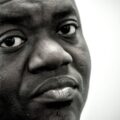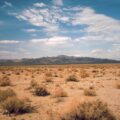A Reluctance to Cede Ground: Age and the Writing Life

“…so blow a kiss to this drowned world.
The gods have spoken: yield.”
—Maxine Kumin, “Going Down”

A Story Larger Than My Own
edited by Janet Burroway
$18.00, Softcover
University of Chicago Press
In her introduction to A Story Larger Than My Own: Women Writers Look Back on Their Lives and Careers, Janet Burroway poses the question, “Where are we, we old women writers, in the world today?” In this graceful collection of essays, nineteen accomplished women writers, all over the age of fifty (more than half are in their seventies), offer their responses. They muse on their history as working writers, consider the writer’s role in society, and offer guidance to writers of any age. While the scope and depth of their answers vary, the essays provide varied perspectives on the complex territory of the aging artist.
Burroway situates her question, “Where Are We Now?” in the context of huge cultural and technological shifts: transitions from the 1950s to post-feminism, from carbon paper to cyberspace, from ink to ether. Distinguished Professor Emerita at Florida State University, Burroway is the author of eight novels and many non-fiction works, including two best-selling textbooks on writing.
Virtually all of the essays she has pulled together here refer explicitly to loss, physical decay, and the erosion of one’s writing identity. Linda Pastan, for example, feels her senses becoming less acute; Marilyn Krysl bemoans a loss of words and facility with language; and Hilma Wolitzer identifies the growing dilemma of not knowing what to write about, coupled with uncertainty about whether readers will care to read what she has to say.
Margaret Atwood connects the term “art,” what one makes or puts together, with “arthritis,” as both words are derived from the term that means “joint,” thereby ingeniously linking creativity with pain. Other essayists speak more directly: “The eye / defects first—” writes Pastan, “or is it the world / which takes the first step / backwards?” Even the management of daily tasks has become difficult, notes Toi Derricotte, and “the lists themselves, with their mashed-up and provoking demands, are a constant source of anxiety and dread.”
The most striking essays consider Burroway’s question in relation to writing itself. Erica Jong describes how a writer’s search for voice becomes more difficult with age. Alicia Ostriker notes the struggle to remain defiant in the face of looming mortality and persistent loss, in order to feed her waning writing energy. Fiction writers Philip Roth and Alice Munro (neither, of course, in this volume), both now in their eighties, have declared their intention not to publish any more work, and as Pastan points out in her essay, the key question for many older writers is: “Should I stop?”
Intriguingly, in describing their careers as writers, several essayists return to their experience as daughters. Native American poet and librettist Laura Tohe recalls hearing a story from her mother, which, in turn, became her own first published story. Judith Cofer examines Virginia Woolf’s contention that “a woman writing thinks back through her mothers,” and concludes, “I have been writing and thinking back through my mother all of my adult life.” Ostriker speaks with gratitude of her mother-in-law, who came to serve as a model in the writer’s middle age. Jong poignantly notes that her mother died while she was writing her essay for this book, and that the loss prompted a poem in her mother’s honor, “Dying Is Not Black.” Perhaps the strongest sense of parental impact comes from Honor Moore: “Now, as I write again about my mother, her life and her death, both of my parents are present, sitting in the back of my mind. I write about them, to become certain about where it is they are sitting, about what their faces look like, about what their lives mean.”
Speaking of daughterhood naturally suggests generation, how the appearance of young writers affects the essayists in their work. But serious consideration of this topic—or its cousin, competition—can be hard to find in A Story Larger than My Own. On the other hand, the differences between being a young writer and an older one are amply noted. Young writers are credited with having an “optimistic ebullience” (Wolitizer) that diminishes with age. They are adept at jump-starting artistic efforts, while their elders are often reduced to “supine dithering,” or at least to an awareness of limits (Godwin). Young writers can experiment freely, but older writers must rely on habit, says Patricia Henley, because, to withstand rejection, “you need to have an equal measure of longing. And that sort of longing is mostly for the young.”
Julia Alvarez takes this a step further: a young writer can employ seductiveness, take on the “Scheherazade” role, she suggests, while an older writer, whose allure has diminished, must focus on routine and tasks, including the difficult ordeals of burying the dead and learning to accept one’s own mortality. Alvarez recounts the story of Demeter and her daughter Persephone, who was consigned to spend six months of the year with Hades in the underworld. Demeter, goddess of fruit, crops and vegetation, an Earth Mother, would seem to be a model for the older writer. Yet, since an old writer, just as a young one, depends on internal energy to make art, she must be able to locate not only Demeter but also Persephone inside herself.
The death of her parents marked her own death as their “writing daughter,” Alvarez writes. She needed to bury that daughter in order to find new fuel for her writing. She draws contrasts between older writers—who she sees as seeking esteem, inclusion, security, and affection—and their youthful counterparts, who she believes look instead for fame, status, fortune, and “love.” In any case, it’s the young writer’s turn, and the older writer “has a different role to play now,” Alvarez says.
But what is that role? A Story Larger than My Own does not yield a simple answer. Most essayists declare an intention to continue writing. They expect this effort to require tremendous energy, in part because of the inevitable struggle with emerging authors for readers in a digital age that feels inhospitable, even forbidding. The essayists display not so much defiance as a reluctance to cede ground. “Fail again. Fail better,” is the mantra Godwin offers, playfully quoting Beckett—but not entirely in jest.

And Short the Season
by Maxine Kumin
$24.95, Hardcover
W.W. Norton, 2014
Enter the eldest essayist, Pulitzer Prize-winning poet and former U.S. Poet Laureate Maxine Kumin, with her essay entitled, “Metamorphosis: from Light Verse to the Poetry of Witness.” When she died in February 2014, at the age of 88, Kumin left her readers the gift of a remarkable volume of poetry, And Short the Season, which includes several poems written in the last weeks of her life. “Metamorphosis” vividly articulates the struggles the poet faced in her career and personal life, and this final volume of poems supplies concrete and convincing evidence of its value.
Kumin’s essay describes a young womanhood in which she “chafed against domesticity.” Like other essayists in Burroway’s collection, she acknowledges her own physical decline (though she does not dwell on it); discloses details of her growth as a writer, including setbacks; and shows herself willing to experiment with style and form. Unlike other essayists, however, Kumin appears never to have considered quitting, putting down her pen. Instead, as the title of her essay suggests, she continued to evolve as a writer well into her ninth decade. More than the other essayists, Kumin seems to have constantly sought a broad canvas and global issues, a quest that did not diminish with time. The poet equipped herself for protest with the benign armor of poetry.
It’s ironic, given the power and force of her later work, that Kumin found her early success writing light verse for newspapers and magazines. As her artistic goals became more serious, she enrolled in John Holmes’s poetry workshop at the Boston Center for Adult Education. There she famously met Anne Sexton and formed a friendship that lasted for the duration of Sexton’s life. This is when her “true” poems began, Kumin says, and also when she began to realize “how arduous the road to acceptance as a woman artist would be.” Kumin never shifted from her view that women writers face a tougher time finding patrons and publishers than do their male counterparts.
Kumin landed a teaching post in 1958, “the first woman ever hired in the Tufts University English Department,” and three years later published her first book of poems, Halfway. That same year she began a fellowship at the Radcliffe Institute, which she says “freed” her to see herself as a writer and strengthened her purpose. In 1973 Kumin won a Pulitzer Prize for Up Country: Poems of New England, moving with her family two years later to a farmhouse in New Hampshire to build a calmer, less distracted life that would nourish her art.
More books of poetry followed, and in 1981 Kumin was named Poetry Consultant to the Library of Congress (now called “Poet Laureate”), the first woman to hold that title. She began to lecture at universities throughout the country. In 1995 she became Chancellor of the Academy of American Poets, resigning three years later to protest the Academy’s lack of minority and female representation.
Kumin began protesting injustices at an early age, openly opposing the war in Vietnam, for example, and describes in her essay how her voice grew more willful, insistent. “For much of my poetic lifetime, my focus was on the natural world, un-tampered with and un-romanticized. But the face of violence and human cruelty eventually broke through…” The poet registered anger not only by demonstrating, but also in her writing, and as she aged her sense of outrage only grew. After the Iraq War, Kumin says, she felt compelled to write poems “linked by my despair at the monstrous contempt American officialdom has displayed for justice and morality in the years since the 9/11 attacks.”
Kumin’s poems address violence and injustice, decay and resilience, and these themes stoke the poetry of her final volume. The poet was raised in a nominally observant Reform Jewish family with European roots. Several poems collected in And Short the Season reveal the difficulty she and her family endured for being Jewish. Kumin’s maternal great-grandfather, for example, emigrated from Austria to Virginia, where he made a living as an itinerant peddler. His son in turn became proprietor of a dry goods store, but limited his Sunday horseback riding to afternoons, so as not to offend churchgoing neighbors. Nevertheless, their persistent gibes would be, “there goes the jew” (“Radford, Virginia, 1904”).
Because the nearest public grammar school was miles away, Kumin was sent to the convent school next door, where she was the only Jewish child. In the poem “Taken Aside,” Kumin describes her fascination with the rosary beads of her third-grade classmates. She was unable to resist taking a pair from a fellow student’s desk. Confronted and accused by the nuns, who summoned her parents, Kumin was, as she put it, “nailed” as a thief. God was of no help to her in this crisis, the poet says, and “Jesus no longer my special friend.”
She describes more intricate bigotries in the poem “Purim and the Beetles of Our Lady,” and more unspeakable ones in the poem “No Place,” which describes “…Nueva Germania, a colony / in Paraguay of racially / pure anti-Semitic vegetarians / or were they purely Aryan / vegetarian anti-Semites?…Everything they planted failed…” Her poetry employs the same vigor to protest violence in her own time, such as the U.S. offensive in Afghanistan—“Medic Recalls Detainee Chained to Cage / Like laundry, draped in neat pentameter” (“Old News”)—and the U.S. detention camp at Guantanamo Bay, Cuba, where one must “Speak of the dark acts at the dark / heart of what took place…” (“Red Tape and Kangaroo Courts II”).
If the poems of And Short the Season indict man’s inhumanity to fellow men, they likewise express outrage at his treatment of the earth. “[I]t…will serve us right,” she says (“Just Deserts”). Kumin’s terse style strengthens her point. In “This One,” for example, she describes seeing several amateur astronomers with their telescopes set up on the Boston State House lawn one night, watching the heavens. The poet observes two men exit a nearby bar, commenting as they walk past the stargazers: “Yeah, says the younger, / You better be lookin’ for a new planet / ‘cause this one’s fucked.” In the poem “Our Mantle” Kumin indicts day-to-day destructive acts, “[L]ike skin over flesh / and sin under always / pumping out oil / pumping in poison / fracking our planet.”
Both the essays compiled by Janet Burroway and Maxine Kumin’s final volume of poems offer sober and useful counsel for writers and all other inhabitants of an increasingly untethered and distracted world. A Story Larger Than My Own recounts the strains and triumphs of women who have lived through and continue to write in an era of unprecedented upheaval and uncertainty. Older writers tend to be provident with their material, Godwin says, comparing their tendency to a baker’s practice: “The old writer wants to use up his fatal tissue like biscuit dough, pushing the leftovers into another and another artful shape—down to the last strange little animal,” implying frugality can stoke creativity.
Kumin acknowledges the distances women writers have come, and their strength, but argues that all writers must remain open to growth. “…Montaigne said I want death to find me / planting my cabbages but that would be in April. / Nobody wants to commit suicide in April…” (“Cabbages”). And while she is reported to have said that “All poetry is elegy,” Kumin herself kept working, at more or less full throttle, until close to the end, which only intensified her focus on global injustice. She leaves not just a legacy, but also this final volume, which exemplifies her calling as woman poet, and poet of witness.
About Rosemary Booth
Rosemary Booth is a writer and photographer living in Cambridge, MA. A contributing writer with The Gay and Lesbian Review, her essays and reviews have appeared in recent issues of the literary journal Under the Sun and in the Imagination and Place anthology, Seasonings, and other publications. Ms. Booth has completed a series of linked essays tentatively titled, “Travels to Old.” She works out of The Writers' Room of Boston.





